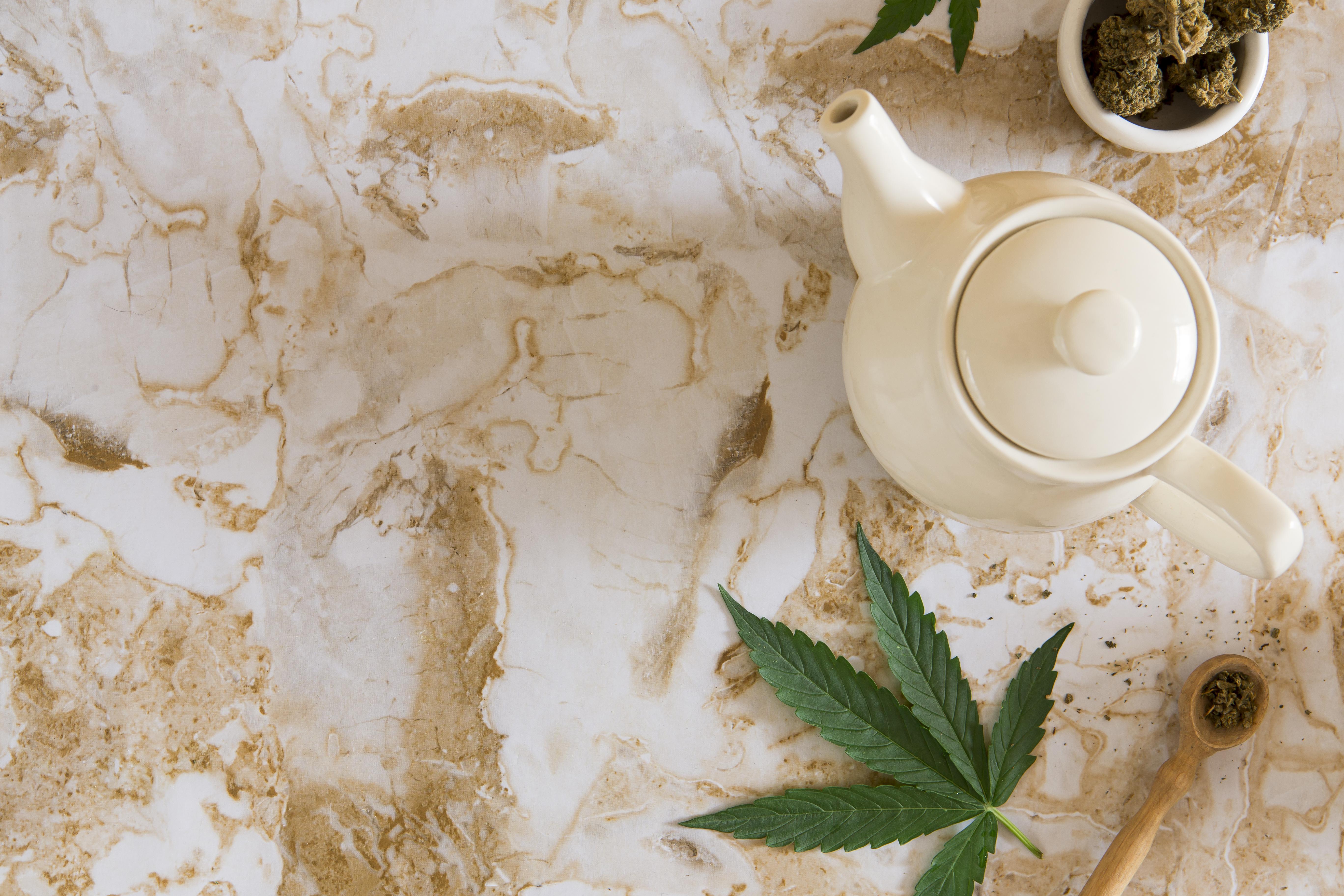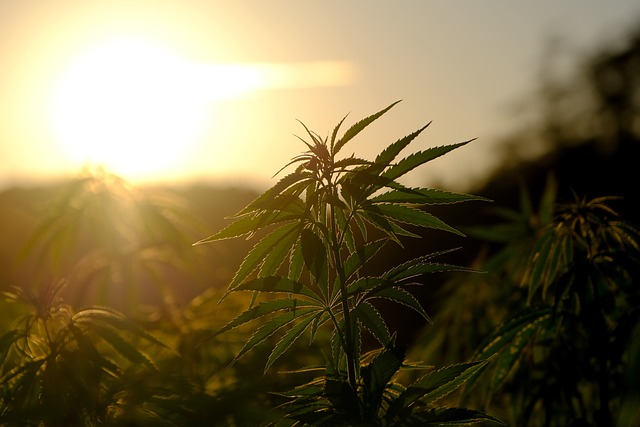
Cannabis tea, a soothing and flavorful beverage, offers a unique way to consume cannabis and experience its potential benefits. With its calming effects and versatility, cannabis tea has gained popularity among cannabis enthusiasts and those seeking a gentle, relaxing experience. Let’s dive into the benefits of cannabis tea and explore some delightful recipes to enjoy.
One of the primary advantages of cannabis tea is its gentle onset of effects. When ingested, cannabinoids like THC are metabolized by the liver, resulting in a slower release into the bloodstream. This gradual absorption can provide a milder and longer-lasting experience compared to other methods of consumption, making it an appealing option for individuals seeking a more controlled and relaxing effect.
Cannabis tea also offers potential therapeutic benefits. CBD-rich tea can provide relaxation, stress relief, and potential anti-inflammatory effects. Additionally, the combination of cannabinoids and other compounds, such as terpenes and flavonoids, found in cannabis can contribute to a synergistic “entourage effect,” enhancing the potential therapeutic properties of the tea.
Preparing cannabis tea can be done using different methods and recipes. Here are a few popular options:
- Basic Infusion: Start by decarboxylating cannabis flowers or using a cannabis-infused product. Combine the desired amount with hot water, butter, or a fatty substance (like coconut oil) to enhance cannabinoid extraction. Allow it to steep for around 15-30 minutes, strain, and enjoy.
- Chai or Spiced Tea: Infuse traditional chai or spiced tea with cannabis. Combine black tea, spices (such as cinnamon, ginger, cloves, and cardamom), milk, and cannabis-infused oil or butter. Simmer the mixture for 15-20 minutes, strain, and sweeten as desired.
- Herbal Blend: Blend cannabis with other herbs for added flavor and potential therapeutic benefits. Consider ingredients like chamomile, lavender, peppermint, or lemon balm. Steep the mixture in hot water for 15-20 minutes, strain, and enjoy the herbal infusion.
It’s important to note that the potency of cannabis tea can vary depending on factors like the strain used, dosage, and individual tolerance. Start with a low dosage and gradually increase as needed to find the right balance for your desired effects.
As with any cannabis-infused product, responsible consumption and understanding local regulations are crucial. It’s essential to be aware of the legal status of cannabis and its derivatives in your jurisdiction and to consume cannabis tea responsibly and in moderation.
In conclusion, cannabis tea offers a delightful and relaxing way to consume cannabis and experience its potential benefits. Its gentle onset, potential therapeutic properties, and versatility in recipes make it a popular choice among cannabis enthusiasts. Whether you’re seeking relaxation, stress relief, or a flavorful beverage, cannabis tea provides a delightful sip-and-relax experience.
The Art of Brewing Cannabis Tea: A Soothing and Therapeutic Beverage
Brewing cannabis tea is not just about combining cannabis and hot water; it is an art that involves careful consideration of ingredients, dosage, and brewing techniques. When done correctly, cannabis tea becomes a soothing and therapeutic beverage that provides a unique and enjoyable experience. Let’s delve into the art of brewing cannabis tea and explore the key elements to create a perfect cup.
Selecting the Right Strain: The choice of cannabis strain plays a significant role in the flavor and effects of the tea. Sativa-dominant strains may offer a more uplifting and energizing experience, while indica-dominant strains can provide relaxation and calming effects. Consider your desired outcomes and choose a strain accordingly.

Decarboxylation: To activate the cannabinoids in cannabis, it’s important to decarboxylate the flowers or buds before brewing. This process involves heating the cannabis at a low temperature to convert the inactive compounds (THCA and CBDA) into their active forms (THC and CBD). This step maximizes the potential therapeutic benefits of the tea.
Choosing Additional Ingredients: Enhance the flavor and potential benefits of cannabis tea by incorporating other ingredients. Common choices include herbs like chamomile, peppermint, or ginger for added aroma and soothing properties. Sweeteners like honey or stevia can be used to balance the taste. Experiment with different combinations to find your preferred blend.
Infusion Method: There are several infusion methods to choose from, each yielding unique results. One popular method involves steeping decarboxylated cannabis in hot water with a small amount of fat, such as coconut oil or butter. The fat helps in extracting the cannabinoids from the plant material, enhancing their absorption into the tea.
Time and Temperature: The duration and temperature of the infusion process are crucial for achieving the desired effects and flavors. Generally, steeping cannabis tea for 15-30 minutes at around 170-200°F (76-93°C) is recommended. Longer steeping times may lead to a stronger infusion, but be mindful of not over-extracting bitter flavors.
Dosage and Personalization: Start with a low dosage of cannabis and gradually adjust according to your tolerance and desired effects. Everyone’s sensitivity to cannabis varies, so it’s important to find the right dosage for your personal needs. Keep in mind that the effects of ingested cannabis may take longer to manifest compared to other methods of consumption.
Responsible Consumption: As with any cannabis-infused product, responsible consumption is key. Understand the legal regulations regarding cannabis in your jurisdiction and consume within the limits defined by the law. If you are new to cannabis or have any health concerns, consult with a healthcare professional before incorporating cannabis tea into your routine.
By honing the art of brewing cannabis tea, you can create a soothing and therapeutic beverage that offers a unique way to enjoy the benefits of cannabis. Through careful strain selection, proper decarboxylation, thoughtful ingredient choices, and mindful brewing techniques, you can craft a perfect cup that suits your preferences and enhances your well-being. Enjoy the artistry of brewing cannabis tea and savor the delightful experience it brings.
From Herb to Infusion: Unleashing the Healing Potential of Cannabis Tea
Cannabis tea offers a gentle and therapeutic way to experience the healing potential of this remarkable plant. From the infusion process to the rich array of medicinal compounds, cannabis tea holds the key to unlocking its healing properties. Let’s explore the journey from herb to infusion and delve into the profound healing potential of cannabis tea.
Herb Selection: Begin by selecting high-quality cannabis flowers or leaves. Consider the desired effects and therapeutic benefits you seek. Strains rich in CBD are often preferred for their potential anti-inflammatory, analgesic, and calming properties, while THC-dominant strains may offer pain relief, relaxation, and euphoria.
Decarboxylation: To activate the cannabinoids in cannabis, it’s important to decarboxylate the herb. This process involves heating the cannabis at a specific temperature to convert the inactive forms of cannabinoids (such as THCA and CBDA) into their active counterparts (such as THC and CBD). Decarboxylation maximizes the medicinal potential of the tea.

Infusion Method: There are various infusion methods to consider. One popular approach involves simmering decarboxylated cannabis in a mixture of water and a fatty substance (like coconut oil or butter) for a prolonged period. The fat helps extract the cannabinoids, allowing for better absorption into the tea.
Medicinal Compounds: Cannabis tea contains a rich array of medicinal compounds, including cannabinoids like THC and CBD, as well as terpenes and flavonoids. These compounds interact with the body’s endocannabinoid system, potentially offering relief from pain, inflammation, anxiety, and other ailments.
Synergy of Compounds: The combination of cannabinoids, terpenes, and other compounds in cannabis tea may create a synergistic effect known as the “entourage effect.” This interaction amplifies the therapeutic potential of the tea, enhancing its effectiveness in addressing a wide range of symptoms and conditions.
Customization and Dosage: Cannabis tea allows for customization based on individual preferences and desired effects. Experiment with different strains, herb ratios, and infusion times to find the combination that works best for you. Start with a low dosage, especially if you are new to cannabis or have a low tolerance, and gradually adjust as needed.
Holistic Approach: Embrace cannabis tea as part of a holistic wellness routine. It can be used as a complementary therapy alongside other treatments, lifestyle changes, and self-care practices. Consult with a healthcare professional to ensure it aligns with your specific needs and goals.
Responsible Consumption: Adhere to local laws and regulations regarding cannabis use. Practice responsible consumption and be mindful of your own limits and sensitivities. Remember that the effects of cannabis tea may take longer to manifest compared to other consumption methods, so patience is key.
By embracing the journey from herb to infusion, cannabis tea can unleash its healing potential. The medicinal compounds found in cannabis, combined with thoughtful preparation and responsible consumption, offer a gentle and therapeutic experience. From pain relief to relaxation and beyond, cannabis tea opens up a world of possibilities for those seeking natural healing alternatives.